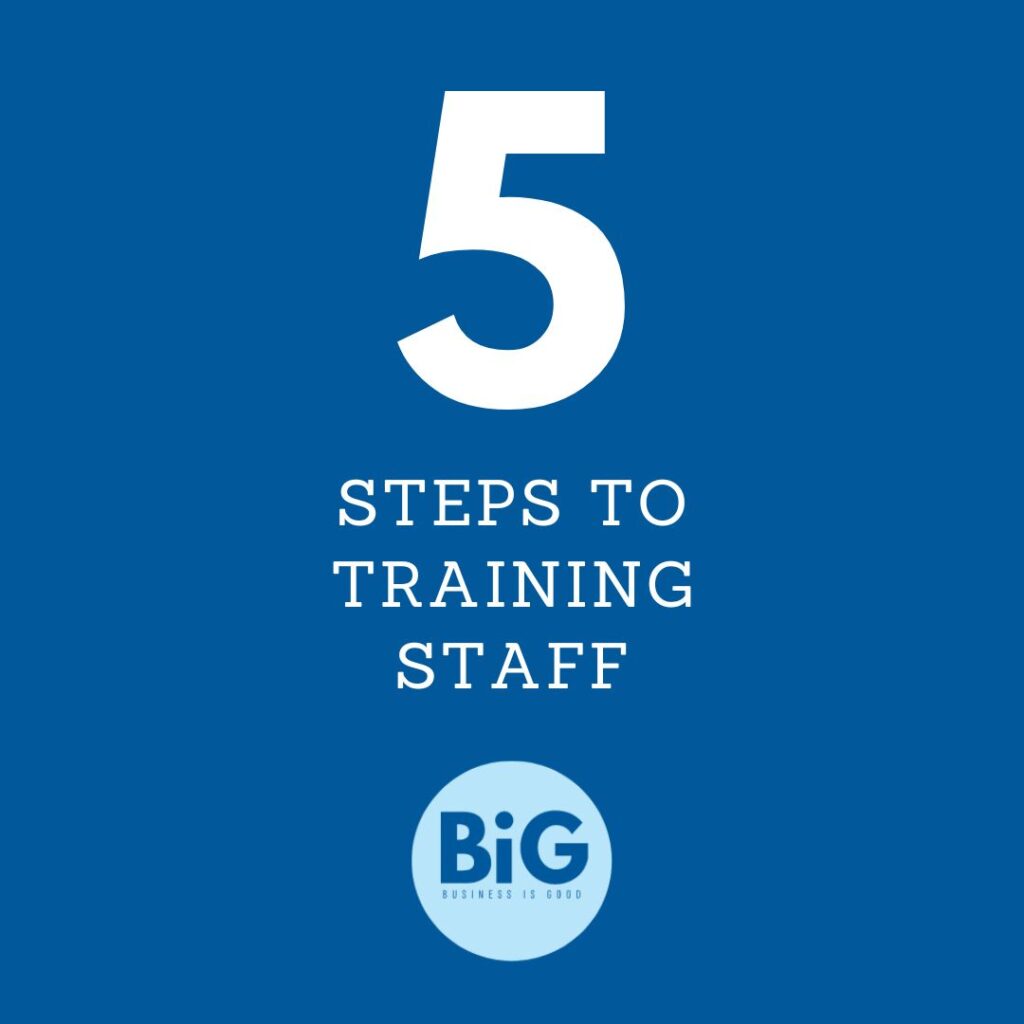No matter what field you’re in, you can build a staff training program following these five steps.
If you’re a business coach, you can help your clients do the same. Take this model and apply your own branding.
First, a question: why do we have to train staff at all? Doesn’t our education system prepare people to work?
In Western culture, our education system is an “industrialized Greek model”.
We follow the original Greek teaching model: a student sits at the feet of their teacher, listens to a speech on a topic, and asks questions to better understand. This was used by Socrates to teach Plato, and by Plato to teach Aristotle. The needs of industrialization sped up the process by incorporating large classrooms, specific subjects and more emphasis on following specific instructions.
But another model–the Hebrew model–is better for training staff on the job.
The Hebrew model follows four phases:
I do, and you watch.
We do it together.
You do, and I watch.
You do.
The Greek model is designed to teach what the teacher knows. The Hebrew model is designed to teach who the teacher IS. It’s powerful for on-the-job training because it’s simple. But it’s incomplete. It requires an evaluation process. For staff to become masters at their craft, they must do more than know how–they must adopt a process of constant improvement. That process should be driven by feedback.
In early Hebrew times, tradespeople received fast and direct feedback: “this food is no good”, or “your sheep are small.” Apprentices learned first from a master, and then from their customers or patrons. There were no managers or NPS processes–you improved, or you starved. This is the root of a free market economy.
In a more complex world, feedback is slower and less direct. Having hundreds of clients makes it hard to find the most important feedback. Multiple levels of leadership means every piece of feedback passes through filters. And removal of severe incentives–eat, or don’t eat–means that feedback isn’t always applied with urgency.
That means we must add a feedback process to create continuous improvement.
So the model for staff development is this:
I do, you watch
We do together
You do, I watch
You do
I correct, you do better.
This is a cycle of mentorship that can be applied in any service business.
For example, in a gym, a good staff training program looks like this:
I coach and tell you why I’m coaching this way
We coach together. I give you specific assignments to help me.
You coach, and I give you feedback to improve until you’re ready.
Then you coach alone for awhile, and reflect on what you know.
After three months, you do a self-evaluation and I do a managerial evaluation.
Then you coach alone, and we repeat between practice and evaluation forever.
In an accounting practice:
I walk you through a series of P&Ls and tax returns and talk while I do.
Then I assign specific parts to you, and check your work.
Then you do a series of P&Ls and tax returns and I audit them.
Then you go off on your own for three months, and take notes.
Then we do an audit of your work and make notes for improvement.
Mentorship is different from “teaching”, at least in the Western sense. As mentors and coaches, we must be less invested in what our clients are LEARNING and more invested in who they’re BECOMING.
Use this model to train your own staff, or teach it to your clients. Add templates and tips to build out your ‘staff training’ program!


